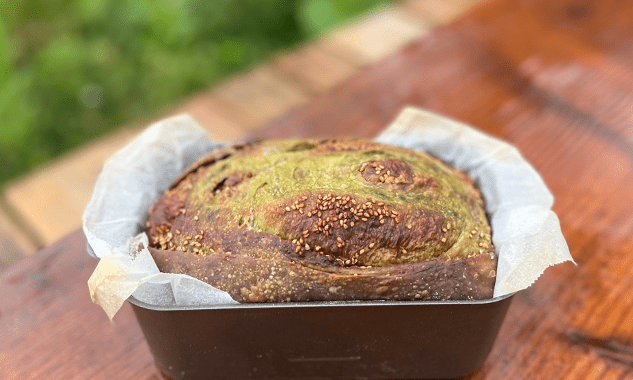Alexandra #193
Germany
Instagram: @xalexty
With this post, I want to share a little bit about my sourdough journey here at Obubu and also, I want to share with you three recipes that I invented during my time here.
Since the day I baked my first sourdough loaf in my life, something changed. I didn’t just fall in love with the process, I became hooked on how it made me feel. Suddenly, I could enjoy bread without the usual heaviness or bloated feeling that used to follow after eating regular bread sometimes. Day after day, as sourdough became a staple in my kitchen, I noticed other changes too: clearer skin, better digestion, and an overall sense of well-being. It may sound too simple, but I truly believe that sourdough has made a real impact on my health (as I don’t want to cut off bread in my life).
Baking with sourdough turned from a curious experiment into a deep passion. I mean, would you stay awake until 3am because your bread needs to get baked? Or would you get up at 6am only because your starter is on peak? Situations like this happened during my journey. But I truly enjoyed it and I think that is what makes the difference between passion and just doing something.
However, and alongside that passion, there’s another thing that has brought me comfort for a couple of years now: It is tea. And here in Wazuka I am surrounded by beautiful tea fields.
So, naturally, I began to wonder: What if I combine those two?
This is where my journey is heading here at Obubu: Discovering the balance between sourdough and tea, and how together they create something that is nourishing and joyful. Also, one more of the things I love about sourdough is how allrounded it can be. While it is often associated with rustic and savory flavours, I have started exploring a different side of it, one that is a little softer, a little sweeter, and just as satisfying. A side that I want to share with you as well.
Here at Obubu, I have been turning my sourdough into a kind of sweet bread. Not overly sugary, but slightly sugared. It should be the kind of bread that feels like a treat with your morning tea or an afternoon pause. I’m basically talking about a cake bread. For one of the recipes I am going to share with you in this blog post, I chose to pair the dough with something that brings a gentle Japanese touch to the loaf. Not too much, but quite decent.
But first, let us talk a little bit about my sourdough journey here at Obubu…
- The first loaf I baked just consisted of flour, salt and starter. Just to watch how the new environment effects the dough (at that point I have to admit, that I brought my starter from Germany to Japan). It took a couple of days until it “woke up.” At the beginning, I had to struggle with the different flour here in Japan, as I couldn’t find good whole grain flour, which I am used to baking with back home.
- The second loaf I baked in Japan got a sweet toasted sesame swirl, because I looove sesame and craved for something special in my bread. I mean, tea is definitely special too, but you know what I mean.
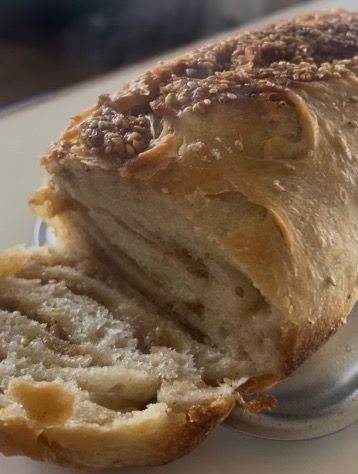

- My third bread got a cashew-coconut swirl. I got that idea because I love that combination and sometimes back home, I used to bake my special kind of nut corners, where the nut layer consists of cashew and coconut. So, I was thinking about creating a bread with that flavour. It gives the loaf a really nice soft taste.
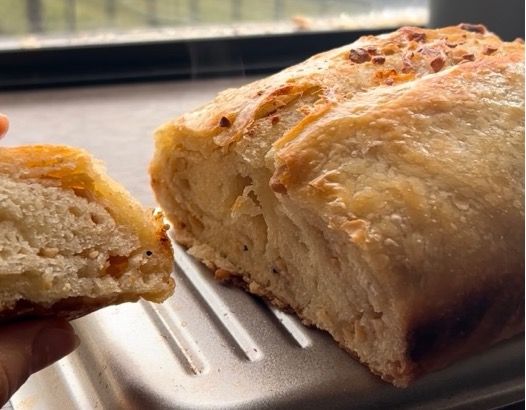

- My fourth bread was like a marble bread (made with our Cooking Matcha Powder and Wakoucha Powder). I did that one to watch how the flour and rising time interacts with the tea powder. I realized that I have to put much more tea powder into the mixture then I thought. And also, the fermentation takes a bit longer.
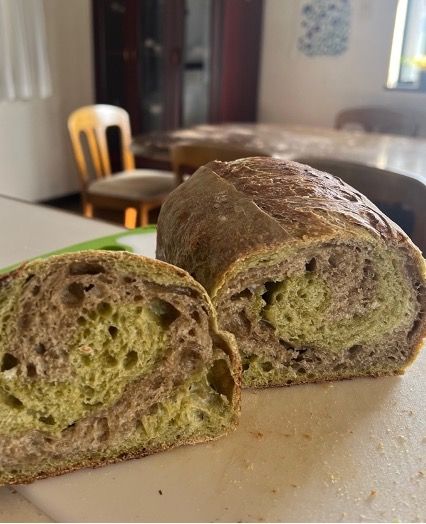
- My fifth bread is the second marble sourdough I baked here at Obubu, and it is a combination of my second and fourth breads. Just to try how it goes together. This time, I took measurements of the ingredients, increased the amount of tea powder, and added sesame.
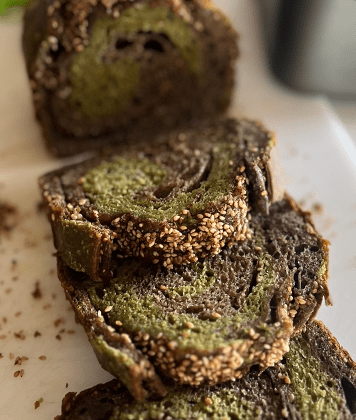
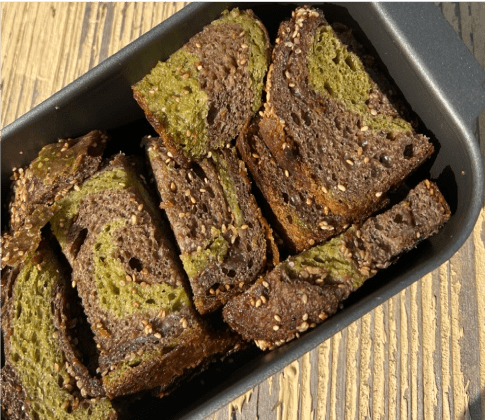
I think all the breads before have been necessary to be at the point where I am right now. Because I learned a little bit more with every loaf I baked. One of the recipes I am going to share is basically a combination of my second and fourth bread, by just picking my favorite features of both.
The sesame gives such a nutty and sweet aroma as the loaf bakes. When it comes out of the oven, it should be golden and lightly crisped. It’s hard not to slice into it immediately, but you should stop yourself and wait until it has just cooled down. Because, if you cut it while it is still hot and you want to store that bread, the bread could get dry a bit faster, as the water content might leave the bread as steam.
The first bread is going to be a sweet Matcha-Wakoucha Marble Bread with sesame swirl.
The sesame swirl will consist of roasted sesame seeds, sesame oil, sugar, a pinch of cinnamon and vanilla. Just the combination by itself tastes already so delicious. The sesame mixture swirl ties everything together with its earthy and nutty warmth. This recipe idea came up during my baking journey here in Japan.
As I have more in my mind, I want to share with you another recipe that I created. A sweet Sourdough Bread with matcha cashew-coconut swirl. I already mentioned before, that I am in love with the combination of cashew and coconut. And I think our matcha matches well with the soft taste of cashew and coconut. This bread is like a landscape in every slice, a swirl of deep green and warm white. Matcha adds a grassy depth that contrasts deliciously with the bread aroma.
For my recipes, you do not need any fancy equipment, as I also did it with just simple utensils I could find in our little kitchen. With some steps I had to get a bit creative, but at the end I would say it worked.
Before baking…
… for all recipes you need an active sourdough starter.
- Prepare the starter by feeding your sourdough starter 6 to 12 hours before baking. The warmer your environment, the faster it will reach its peak. Use the starter at its peak, when it is bubbly and active.

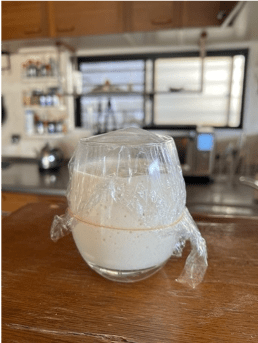
Recipe 1: Wakoucha-Matcha Sourdough with Sesame Swirl
Dough:
| 175g Flour | 175g Flour |
| 125g Water | 125g Water |
| 50g Sourdough Starter | 50g Sourdough Starter |
| 5g Wakoucha Cooking Powder | 5g Matcha Cooking Powder |
| 15g Sugar | 15g Sugar |
| 5g Salt | 5g Salt |
| 9g Oil | 9g Oil |
| Vanilla |
Filling:
| 55g Sesame Oil |
| 50g Sesame Seeds |
| 45g Brown Sugar |
| 4g Cinnamon |
| Vanilla |
- Mix starter and water in a bowl, combine 250g warm water with 100g of your starter and oil. A well-fed starter should float on the surface.

- Add flour & let it rest.
Add 350g flour and gently mix until just combined. Let the dough rest, covered, for 30 minutes. This rest allows gluten development to begin without overworking the dough.
- Add salt & sugar.
After 30 minutes, add 10g salt and 30g sugar. Press them into the dough evenly.
- Divide the dough into two equal portions and transfer each to a separate bowl.
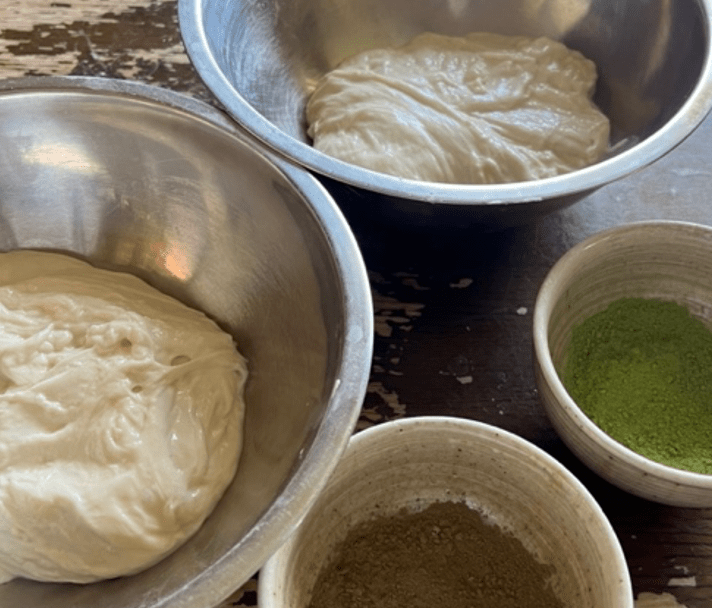
- Infuse with tea powder, stretch & fold.
Mix a bit of water with the tea cooking powder (create a paste) for each dough portion. Knead the mixture gently but thoroughly into each dough, then do the first stretch and fold.
Repeat stretch and folds four times, spaced 30 minutes apart.
- Bulk fermentation begins.
Let both dough portions rest for 1 hour to continue gluten development. This step is key before incorporating tea powder. - Final bulk rest.
After the last fold, let the dough rest at room temperature for 5-7 hours, depending on your ambient temperature.
- Prepare the filling.
While the dough is resting, make your sesame filling. Combine the ingredients in a pan over low heat. Stir continuously for 3–5 minutes until thickened and aromatic.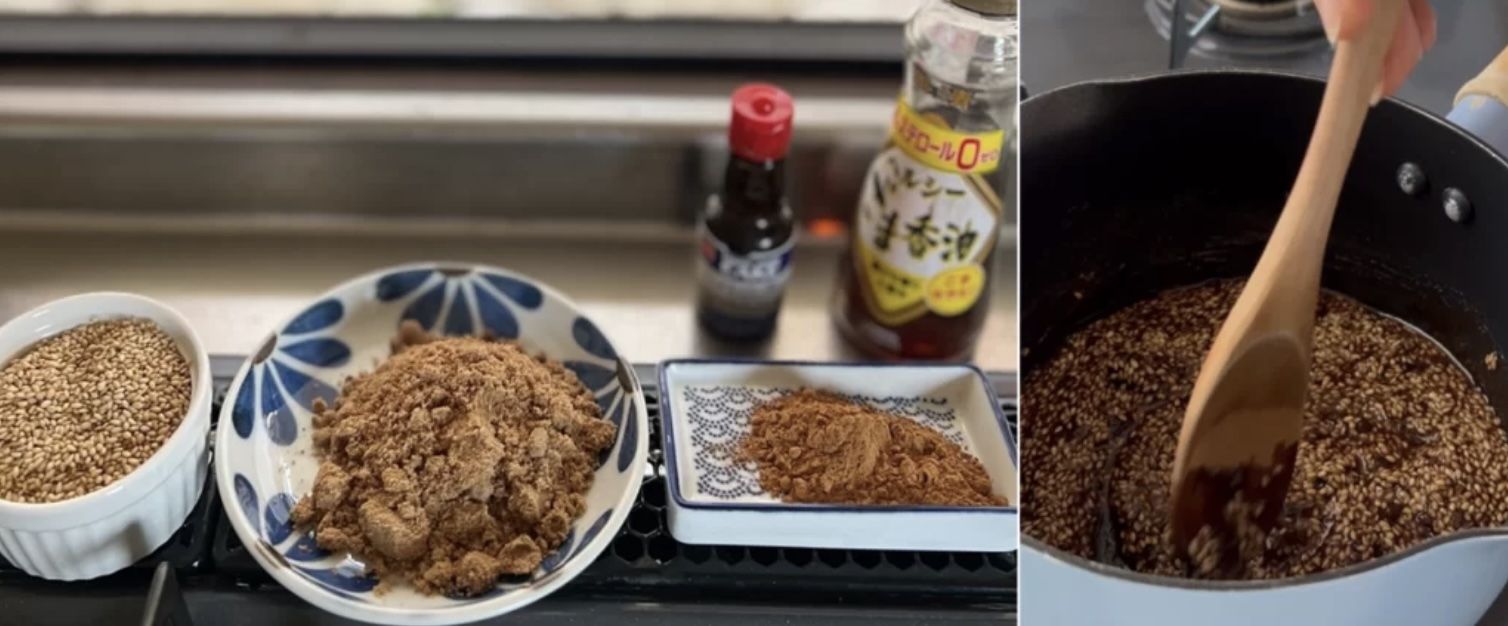
- Shape and cold ferment.
After final bulking rest lightly flour your work surface. Stretch both dough portions into squares. Spread the sesame filling over one square and place the second on top. Roll the layered dough tightly, it should have a surface tension. Transfer to a loaf pan or baking tray, cover, and refrigerate overnight for cold fermentation.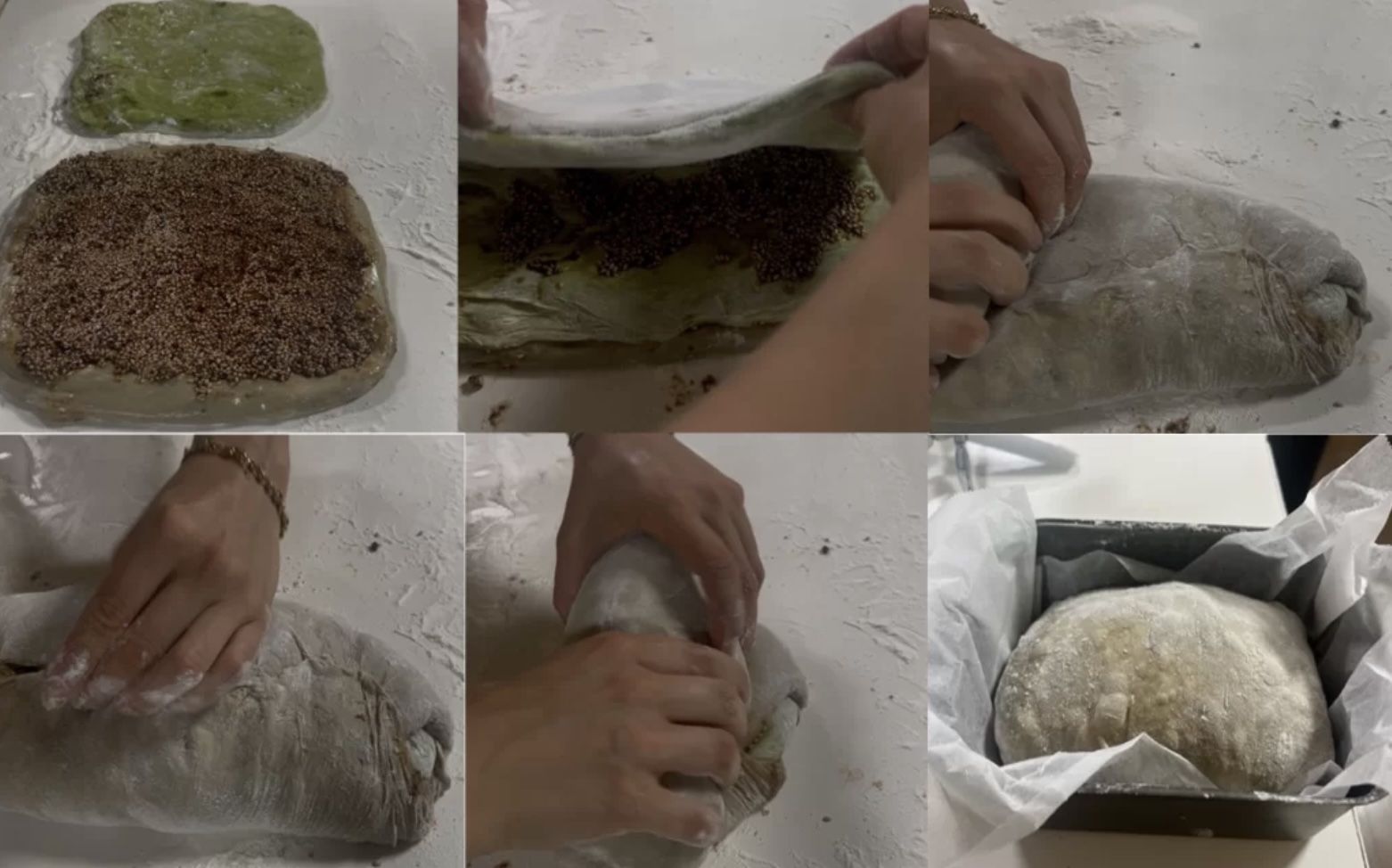
- Score and bake.
The next morning, preheat your oven to 230°C (446°F). Score the bread, place your dough in the oven, and add two ice cubes next to it (for steam). This moisture helps the bread to last longer and rise beautifully. Bake for about 35 minutes.
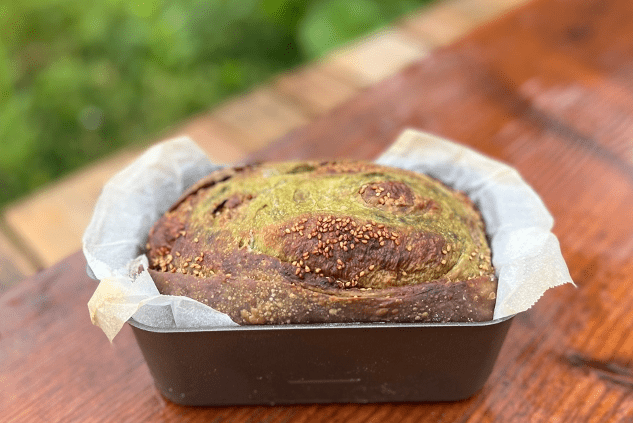
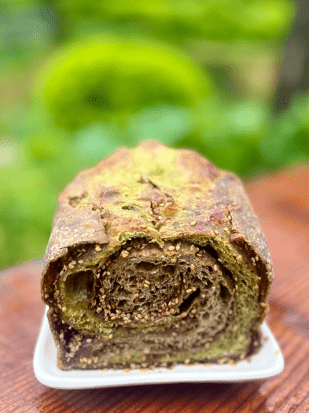
Recipe 2: Sourdough with a Matcha Cashew-Coconut Swirl
Dough:
| 350g Flour |
| 245g Water |
| 90g Starter |
| 30g Sugar |
| 10g Salt |
| 15g Oil |
Filling:
| 80g Coconut Oil |
| 70g Sugar |
| 150g Cashew (grounded and chopped) |
| 50g Almonds (grounded) |
| 10g Matcha Cooking Powder |
| Tonka |
- Combine starter, water, oil, sugar, and salt together in a bowl until thoroughly mixed. Then, add your flour and mix well until fully incorporate.

- Let the dough rise at room temperature for 4-6 hours.
During this time, do 4 sets of stretch and folds, spaced 45 minutes apart.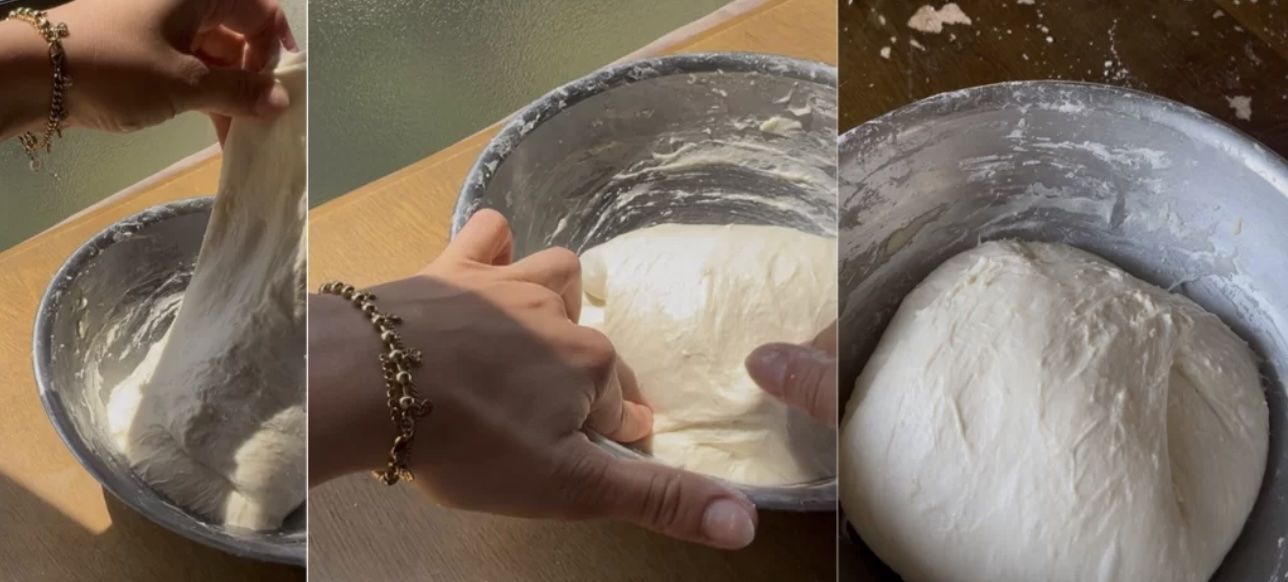
- Rest for another 6 hours.
- Prepare the filling.
While the dough is resting, prepare your matcha-cashew filling. Combine the ingredients in a pan over low heat. Stir continuously for 3–5 minutes until thickened and aromatic.
- Spread the filling.
Flour your counter and stretch the dough into a square. Spread the filling over the dough. Roll the dough tightly, it should have a surface tension. Transfer to a loaf pan or baking tray, cover, and refrigerate overnight for cold fermentation. (See full video on Instagram)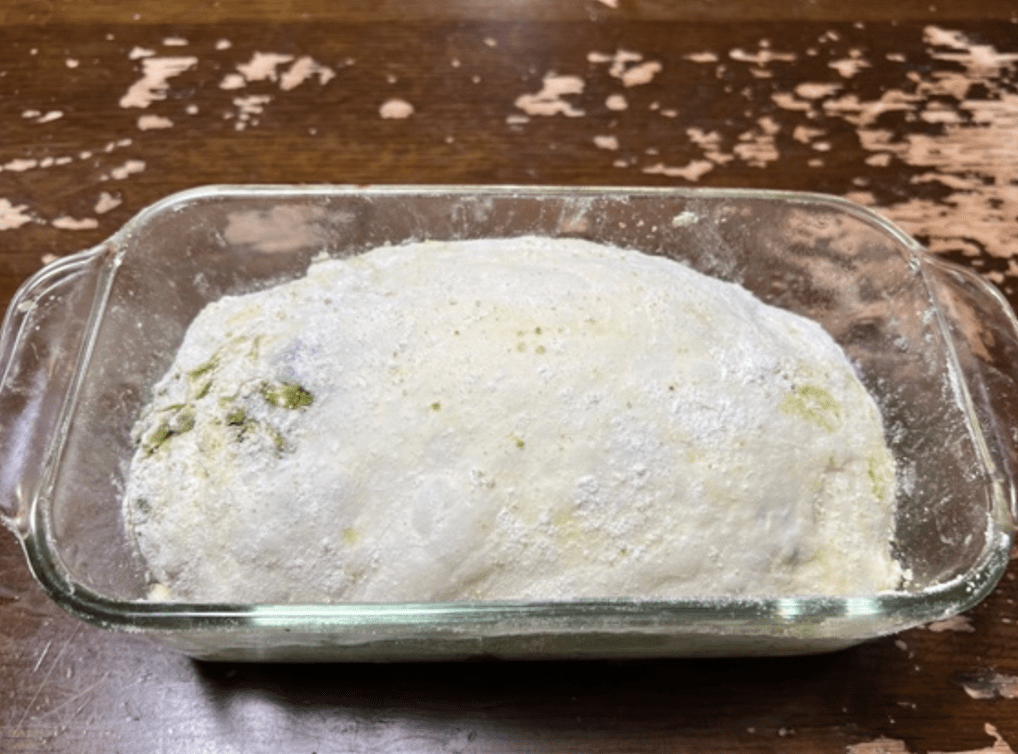
- Score and bake.
The next morning, preheat your oven to 230°C (446°F). Score the bread on top, place your dough in the oven and add two ice cubes on top of the bread (for steam). This moisture helps the bread last longer and rise beautifully. Bake for about 35 minutes.
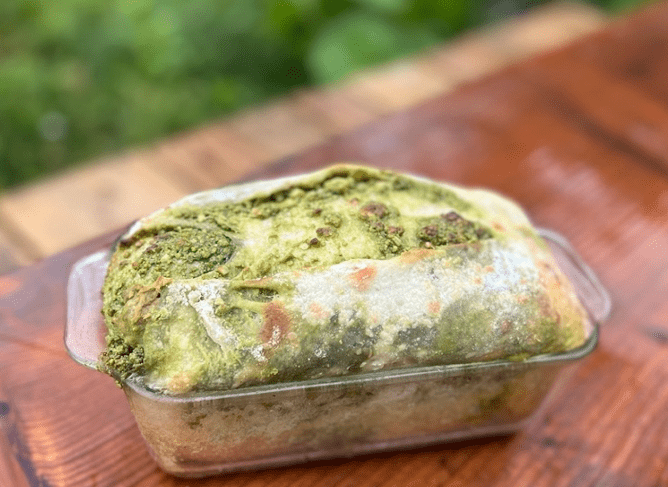
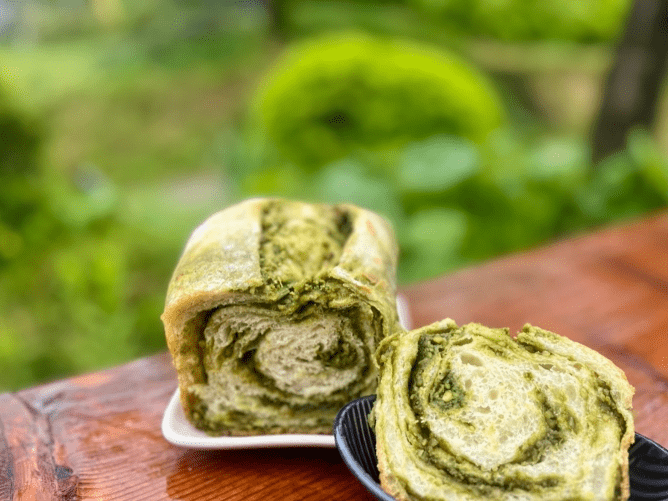
Recipe 3: Sourdough Focaccia with Genmaicha Powder
Dough:
| 500g Flour |
| 350g Water |
| 150g Starter |
| 20g Olive Oil |
| 10g Sugar |
| 10g Salt |
Sauce:
| 20g Genmaicha Cooking Powder |
| 70g Olive Oil |
| 1 Clove of Garlic |
| 1 Onion |
| 4 Dried tomatoes |
| Salt, Pepper, Basil, Thyme |
- Combine starter, water, oil, sugar, and salt together in a bowl until thoroughly mixed. Then, add your flour and mix well until fully incorporated.
- Let the dough rise at room temperature for 7-10 hours.
During this time, do 3-4 sets of stretch and folds, spaced 45 minutes apart. The dough should become airy and jiggly.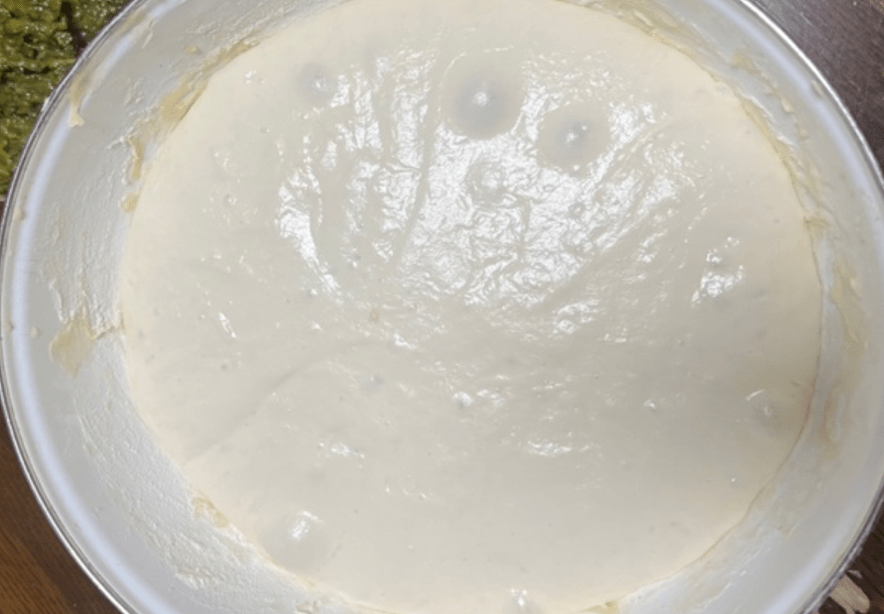
- Cold proof.
After the first fermentation you can cover and refrigerate the dough for 12-48 hours before baking. But you don’t need to. You can also let your dough rise fully at room temperature and bake straight after that step.
- Prepare the sauce.
Chop onions and dried tomatoes, grate garlic, and mix everything for the sauce together.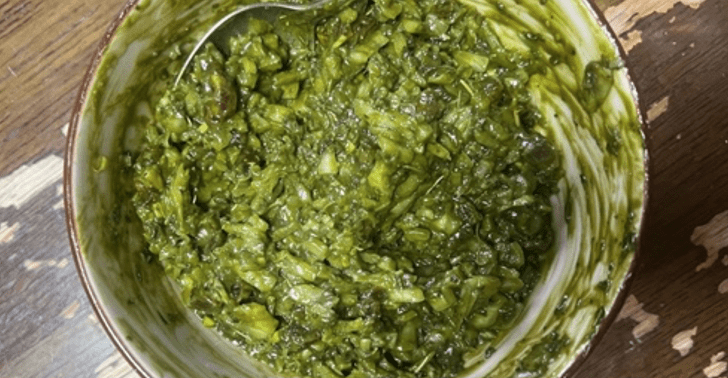
- Drizzle with sauce and bake.
Preheat your oven to 230°C (446°F) and bake for about 30min.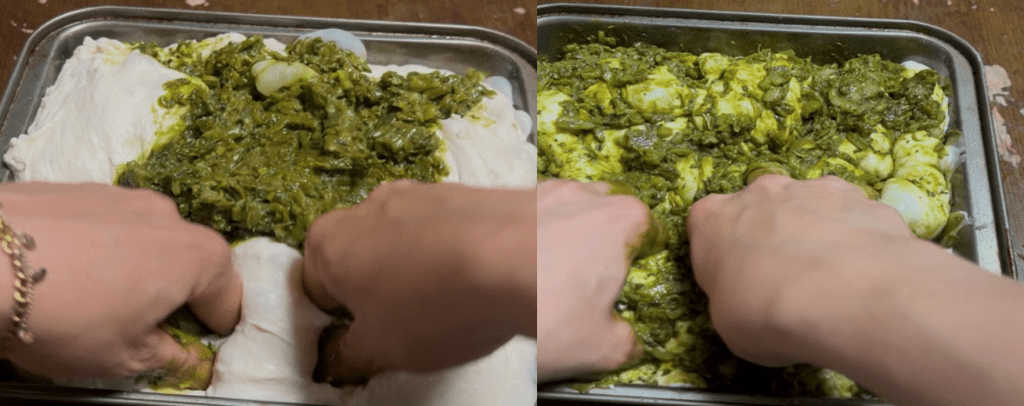
Schedule that worked for me:
8pm: Feeding Starter
8am: Mixing dough together (Step 1)
8am-1pm: Rest + Stretch and folds (Step 2)
1pm-8am: Cold proof (Step 3)
8am: Drizzle with sauce and bake focaccia (Step 4 + Step 5)
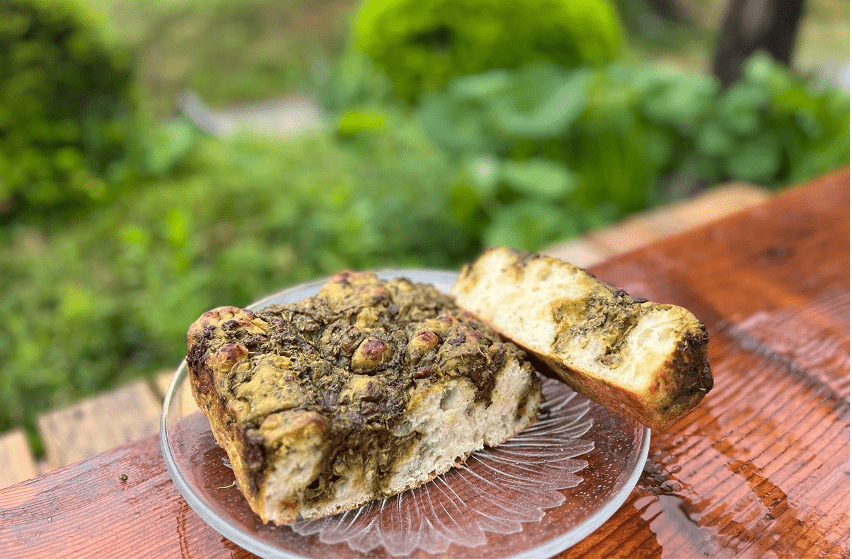
I hope these recipes inspire you to experiment and to find your favorite flavour combinations in the kitchen you never thought about before. Thanks so much for spending a little time in the kitchen with me. I hope these recipes bring as much comfort and joy to your home as they do to mine.
Alex, Intern #193

